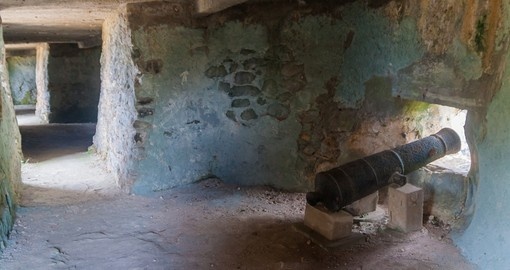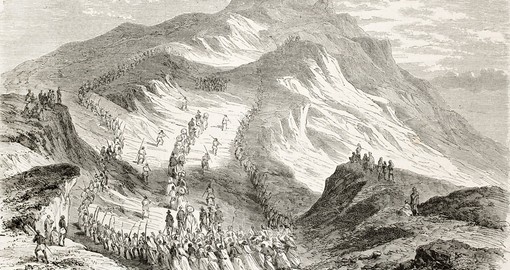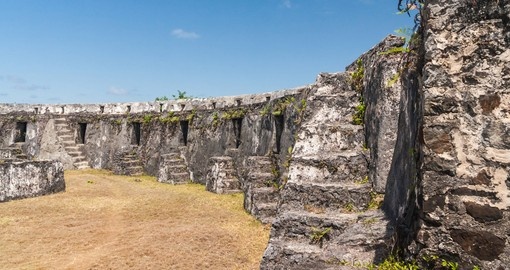Madagascar History
The earliest history of the island of Madagascar remains relatively unclear to historians. The majority of archaeological evidence suggests that Madagascar remained uninhabited until approximately 1500-2000 years ago. The initial waves of migration arrived in outrigger canoes and brought new crops, agricultural techniques and linguistic roots.
The 9th century AD witnessed even more migration first by the Arabs, then by Bantu-speaking East African migrants. European contact did not begin until early in the 16th century when Portuguese sea captain Diogo Dias first spotted the island. The Portuguese, however, failed to establish a base there and it was instead buccaneers from North America and Europe who were more successful in making Madagascar an important trading port on the Indian Ocean during the 17th century.
With the growth of trade in Madagascar expanding, so too did the growth of Malagasy kingdoms. The most powerful of all the kingdoms was the Merina Kingdom in the central highlands. Their chief was Ramboasalama who initiated the unification of Madagascar under Merina rule. Upon his death, he was succeeded by his son Radama in 1810. Radama began talks with Britain to establish diplomatic relations.
In 1890 Britain gave Madagascar to the French in exchange for Zanzibar and the French turned the island into an official colony in 1897. Despite improving certain aspects of life in Madagascar like expanding education and abolishing slavery, the French were also responsible for suppressing the Malagasy language and culture. Resentment for the French began to grow and by the 1920s, nationalist movements began to develop. Tensions culminated in a revolt in 1947 that the French eventually managed to suppress but not before the deaths of some 80,000 people.
In 1958 the people of Madagascar voted in a referendum with the goal of becoming an autonomous republic within the French community of overseas nations. Phillibert Tsiranana became the country’s first president while the French maintained control of the majority of trade and industry. Tsiranana was forced to resign in 1972 and was replaced by army general Gabriel Ramantsoa. Ramantsoa was a socialist who entered into talks with China and the USSR. He closed French military bases, expelled French farmers and began to collectivize farming. As a result of these actions, Madagascar’s economy suffered and Ramantsoa was forced to resign.
A new government was formed by Admiral Didier Ratsiraka who offered more socialist reforms, however, the debt crisis of the early 1980s forced him to abandon such reforms. By 1991 the people demanded his resignation. General elections were held and Professor Albert Zafy won ending Ratsiraka’s seventeen-year reign. Unfortunately, years of communist-style dictatorship had taken its toll on Madagascar’s economy and Zafy found it increasingly difficult to gain the population’s trust. In the next election, Ratsiraka surprised everyone by winning another term.
The general elections of 2001 saw Marc Ravalomanana, a former yoghurt seller and businessman win. He set about fixing the economy and tried to stamp out political corruption. As a result of this, the World Bank, France and the US pledged aid. Despite his immense popularity, protests led by Antananarivo mayor Andry Rajoelina in 2009 had a profound effect on the country. As protests turned violent, the president was pressured into resigning and the army handed power to Andry Rajoelina. Rajoelina initiated a new constitution in 2010 and general elections are scheduled for 2013.
It will be interesting to watch how Madagascar’s political future unfolds. What is certain is that the island remains a unique destination for travellers who enjoy an out-of-the-ordinary experience as much of what Madagascar offers is not available anywhere else in the world. A cultural richness exists on the island courtesy of its unique history resulting from its isolation from the rest of the world. A “go with the flow” attitude is necessary, but Madagascar is a destination that will not soon be forgotten.
Madagascar Travel Information
At Goway we believe that a well-informed traveller is a safer traveller. With this in mind, we have compiled an easy-to-navigate travel information section dedicated to Madagascar.
Learn about the history and culture of Madagascar, the must-try food and drink, and what to pack in your suitcase. Read about Madagascar's nature and wildlife, weather and geography, along with 'Country Quickfacts' compiled by our travel experts. Our globetrotting tips, as well as our visa and health information, will help ensure you're properly prepared for a safe and enjoyable trip. The only way you could possibly learn more is by embarking on your journey and discovering Madagascar for yourself. Start exploring… book one of our Madagascar tours today!
Extend Your Trip
After your Madagascar tour, why not consider one of Goway's Europe Tours
Book your Madagascar tour with Goway!
 AfricaExperts is the exclusive division of Goway that specializes in planning and organizing Madagascar tours and experiences. Choose from one of our small group tours and more. We want to be your first choice when next you go globetrotting to Madagascar.
AfricaExperts is the exclusive division of Goway that specializes in planning and organizing Madagascar tours and experiences. Choose from one of our small group tours and more. We want to be your first choice when next you go globetrotting to Madagascar.
Get a Trip Quote Order a Brochure




















